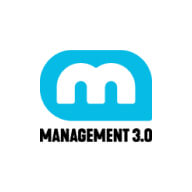Employee Benefits Board
Description
This is a template to show your current and prospective employees your company benefits. This is an example of Miro's Employee Benefits for the Netherlands and all of our benefits boards can be found on our careers site https://m.turbidity.top/careers/.
Having your benefits displayed in this way helps to create a unique visual experience.
Why employee benefits matter
Employee benefits play a crucial role in attracting and retaining top talent, enhancing employee satisfaction, and fostering a positive work culture. By offering a well-designed benefits program, organizations can demonstrate their commitment to the well-being and success of their employees.
How to customize the Employee Benefits Board for applicants
Step 1: Assess your organization's needs
Before customizing the board, take some time to assess your organization's unique needs and goals. Consider factors such as company size, industry, budget, and employee demographics. This assessment will serve as the foundation for tailoring benefits to meet specific requirements.
Step 2: Understand the components of a Benefits Program
A comprehensive benefits program typically includes various components, such as healthcare, retirement plans, paid time off, wellness initiatives, and additional perks. This template provides detailed information on each component, including best practices and examples from leading organizations:
Healthcare benefits
Healthcare benefits are a critical aspect of any employee benefits program. Learn about different types of health insurance plans, coverage options, and strategies for controlling healthcare costs while providing quality care for employees.
Retirement plans
Help your employees plan for their future by offering retirement plans such as 401(k) or pension programs. Understand the key features of these plans, legal considerations, and how to communicate retirement benefits effectively.
Paid time off
Explore various types of paid time off, including vacation days, sick leave, parental leave, and holidays. Discover industry standards, legal requirements, and innovative approaches to promoting work-life balance.
Wellness initiatives
Investing in employee wellness can lead to increased productivity and reduced healthcare costs. Learn about wellness programs, mental health support, fitness incentives, and other initiatives that promote a healthy and engaged workforce.
Additional perks
Differentiate your organization by offering unique perks and benefits. Explore examples of popular perks like flexible work arrangements, professional development opportunities, employee discounts, and more.
Step 3: Customize the Benefits Program
Once you have gained a comprehensive understanding of the various components, it's time to customize the benefits program to align with your organization's needs and culture. Use the examples provided in this template as inspiration to create a tailored benefits package that reflects your company's values and priorities.
Step 4: Communicating and implementing the Benefits Program
Effectively communicating the benefits program to employees is crucial for its success. Develop clear and concise communication materials, conduct informative employee meetings, and leverage technology to streamline benefits administration.
Remember, employee benefits are an ongoing process that requires regular evaluation and adjustment. Stay informed about industry trends, regulatory changes, and employee feedback to ensure your benefits program remains relevant and impactful.
Categories
Similar templates





